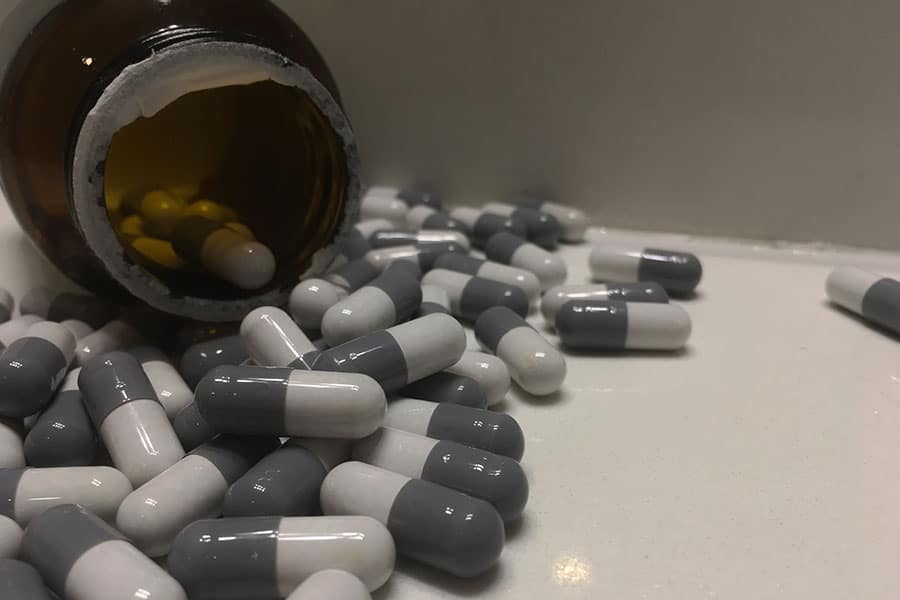Have you ever had trouble reading the print on prescription labels? Have the tiny words ever led to a mishap in medication administration?
Janeen Jones, BSN, RN, felt that there were too many near-mishaps for comfort when it came to medication administration. The small print on prescription labels and the low light in hospital settings could lead to medication error, so she developed a line of lighted magnifiers to prevent any future errors from occurring. Her lighted magnification system, aims to improve lighting and magnify the prescription labels on medication bottles for providers in order to reduce medication errors caused by difficult-to-read labels and packaging.
Tiny Words, Big Mistakes
“I was becoming increasingly frustrated that drug labels seemed to be getting more difficult to read,” said Jones, the co-owner of Janeil Enterprises, Inc., and creator of the MagniMed system. “There is a great deal of information crammed onto tiny drug labels and bottles, and the print on the labels seemed to be getting smaller and smaller.”
At first, Jones wondered if her own trouble with reading labels stemmed from dim lighting and her older eyes, but then she noticed, while working as a clinical instructor, one of her students was struggling, too: “One of my students, with young eyes on a well-lit day shift, couldn’t read the fine print identifying a medication as a ‘delayed release capsule,’” said Jones. “She was ready to crush the contents of the capsule and administer it through a feeding tube, which would have delivered a 24-hour dose of the medication immediately rather than slowly throughout the entire day.”
Label readability is crucial in the nursing profession. Medical errors are, according to a Johns Hopkins study from 2016, the third leading cause of death in the United States and can lead to serious consequences. Data show preventable inpatient medication errors cost approximately $16.4 billion annually, while preventable outpatient medication errors cost approximately $4.2 billion annually. Yet, the labels on medication bottles continue to be crowded with tiny words. “I realized that attacking the dangers posed by unreadable drug labels was something I couldn’t wait around for someone else to do,” Jones said.
Creating Janeil Enterprises
Jones started her research into the readability of labels by conducting a survey. Her brother, Neil Moore, a businessman and entrepreneur, helped her create an online survey directed toward nurses, pharmacists and respiratory therapists. The results showed that 88% of respondents had trouble reading the small print on medication labels, 87% believed that small print was a potential cause for medication errors, and 80% of the care providers surveyed said the making labels easier to read would reduce actual medication errors.
Jones said the scariest response from her survey was that half of the respondents said they were personally aware of a near miss or actual medication error that had been caused by small print on labels.
“I knew [readability] was a problem, but I didn’t realize it was such a huge problem for so many people,” said Jones. She knew she was taking the right steps in making labels readable. Her next step was to find articles and other research tools on the subject, but she “was very surprised to find there was almost nothing in the literature about the problem.”
Moore suggested Jones write her own findings in an article, which was then published in the American Journal of Nursing. Her article became a jumping off point for Moore’s and Jones’s collaborative efforts to find a solution for small print on labels.
“I knew what healthcare professionals like me needed, and my brother has spent a lot of time with technology designed to reduce med errors and knew the ‘business of healthcare,’” said Jones. Together, the sister and brother pair created Janeil Enterprises, Inc., and developed the MagniMed product line.
Designing Magnifiers
After researching what would be the best solution to reading small label print, Jones concluded that lighted magnifiers would be ideal. She and Moore thought it would be the easiest solution as well.
“As it turned out, it wasn’t easy at all,” she said. Jones searched through thousands of existing magnifiers, both online and in stores, testing which ones might work. “We discovered that adequate lighting and a specific amount of magnification are both essential in making the labels readable. To hold up to the heavy use of healthcare settings, durability is essential, and for infection control reasons, ‘cleanability’ is required as well,” Jones added.
To define exactly what a lighted magnifier needed to have in order to work in the healthcare environment, Jones and Moore developed a product evaluation process . “We had some really expensive devices fail our tests,” said Jones, “RightSpec Certification allows us to be sure we deliver solutions that will truly meet the need.”
With the proper magnifiers in place, the next challenge for Jones and Moore was to get the products into the med rooms and on med carts.
“We spent hundreds of hours searching for an existing solution that would allow us to attach the lighted magnifiers to carts and cabinets, or even simply near them,” she said. In the end, “we had to develop our own attachment systems to get the light and magnification where staff needed it.”
The Future of the Product
The specialty lighted device was first tested at a large urban medical center in Ohio. “We started the evaluation by having the nursing staff on the evaluation units carry and use our pocket-size solutions and give us feedback through surveys,” said Jones. “We then installed our magnifier systems in medication rooms on several nursing units, on medication carts in a transitional care unit and in the pharmacy.”
Results showed 94% of staff members using the equipment reported having a lighted magnifier decreased the risk of medication errors related to difficult-to-read labels. And readability wasn’t the only benefit: The system helped with checking dosages of medications drawn in syringes, verifying volumes of poured liquids, checking expiration dates and reading lot numbers on vaccines.
“Everything we’ve learned so far tells us that the small print on medication labels is harming patients,” said Jones. “Today, our goals are to drive awareness of the problem; get hospitals to adopt the practical, easy to use, effective and affordable solutions we’ve designed; and to develop business relationships that can help us do both.” According to Jones, the company plans to release a completely digital solution in the near future.






